PlayStation Pulse Elite and Explore: What We Might Expect
The new PlayStation Pulse Elite headset and Explore wireless earbuds: Headphone Expert Breaks Down What We Might Expect
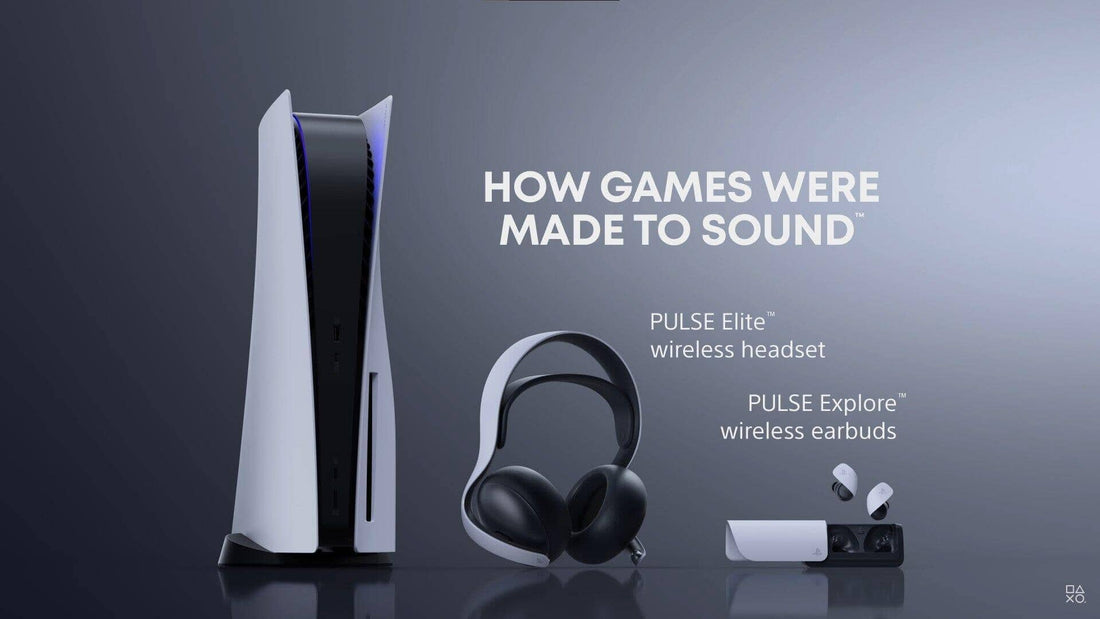
Introduction
On Aug 23, 2023, Playstation announced the release of their next set of gaming peripherals: the Playstation Portal remote player ($199.99), Pulse Elite wireless headset ($149.99), and Pulse Explore wireless earbuds ($199.99). There’s been a couple hands-on articles and videos covering the Portal but surprisingly little information actually talking about what we can expect from the headset and earbuds.
Importantly, Sony Interactive also just announced that they’ve acquired high-end planar magnetic headphone company Audeze. And thus, I thought it’d be appropriate to share my thoughts as someone who reviews high-end audio products on what we might be able to expect from Playstation’s newest offerings, introduce Audeze, and give some context for the new technologies we’re seeing.
Note: I have no inside information on any of these products. These are my personal thoughts after seeing the major press releases based on my experience in the audio hobby.
Audeze acquisition announcement and further context
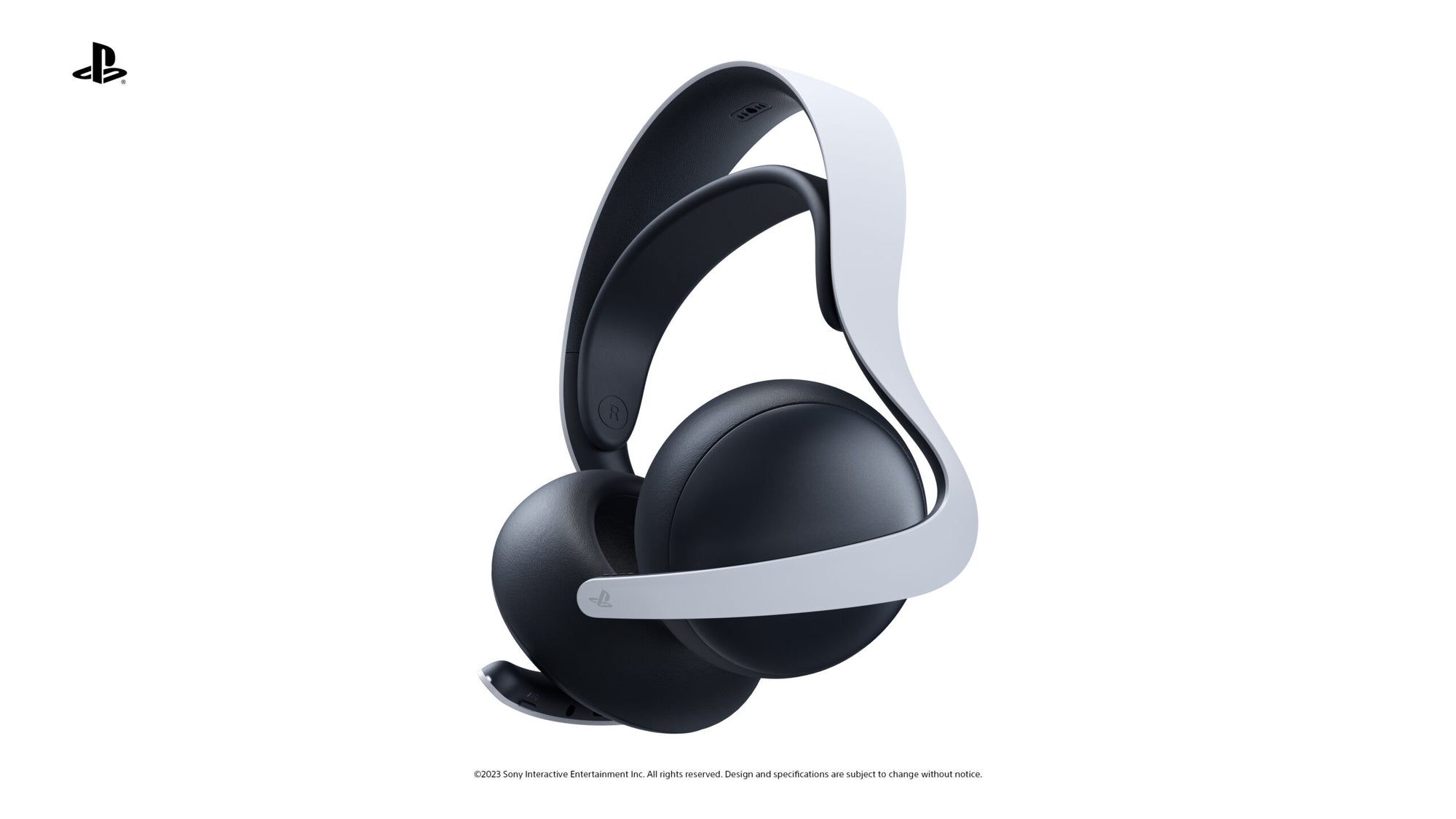
PULSE Elite. Source - PlayStation.Blog
Pulse Elite Headset
First up is their new gaming headset. At $150, it looks to be downright reasonable considering the feature set that it has and the price of other gaming headsets in the market. Here are the quick facts and features that Playstation has divulged so far:
- Wireless (offering lossless audio) and is Bluetooth compatible
- Retractable boom mic with AI-enhanced noise rejection of background noises
- Planar magnetic drivers
- Comes with a charging headphone stand/hanger
- Comes with a wireless USB adapter for the PS5 to connect to Playstation Link. No adapter is needed for the connecting to the Portal - that is built in. This adapter also allows for connecting to PC and Mac.
- Simultaneous Bluetooth and Playstation Link pairing
- Playstation’s 3D audio
- No mention of noise canceling (ANC)
At first glance, this isn’t anything too out of the ordinary for a wireless headset. Bluetooth compatibility and a low-latency wireless USB adapter is expected. The charging headphone stand and retractable mic are very clever touches. But the two points that really stood out to me were the planar magnetic drivers and the AI-enhanced noise rejection. The lack of ANC is a bit disappointing given that Sony is a leader in that area with their other wireless headphones.
Planar Magnetic Drivers
Though you can’t really see it, almost every headphone or headset you’ll buy uses a type of driver technology called a dynamic driver. You’re guaranteed to have seen some form of these circular, cone-like shapes on a speaker. These are by far the most popular type of technology for reproducing sound for a variety of reasons such as cost, simplicity, reliability, and maturity.
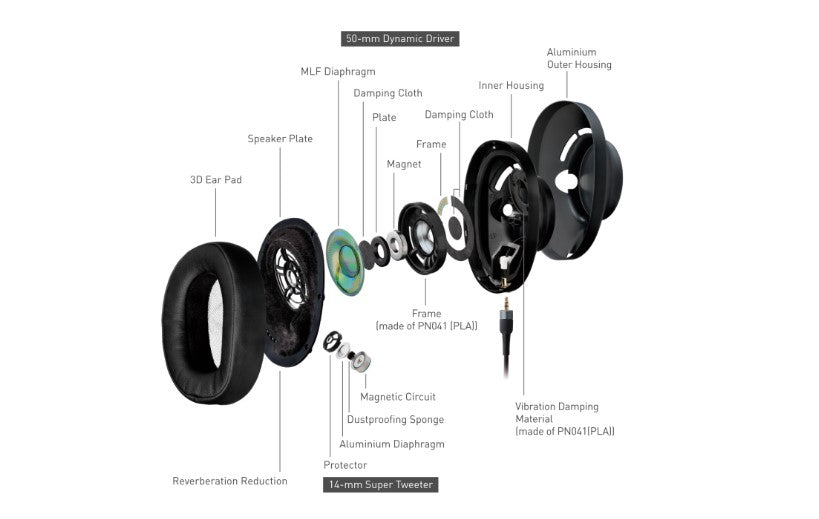
Example dynamic driver headphone design - Source: Technics EAH-T700
However, a number of other driver technologies are employed in audio gear. Planar magnetic drivers are the next most popular, though it’s been largely marketed to the enthusiast (“audiophile”) or professional market. Planar magnetic drivers are flat and produce sound under a different design principle to address some of the limitations that dynamic drivers have. I won’t go into the technical details as it can get very complex very quickly. But suffice it to say, planar headphones have a fairly distinct sound presentation to a dynamic driver. Whether or not planars are necessarily better is an open-question that audiophiles continue to debate. Personally, I wouldn’t focus too much on the driver technology or the marketing around it. The main question is how the product as a whole sounds.

Exploded view of planar magnetic drivers - Source: Audeze
There are two major players when it comes to planar headphones: HiFiMan and Audeze. Both companies have taken a very different approach to their planar headphones. HiFiMan, based out of China, focuses primarily on the audiophile market while Audeze, based out of California, has expanded their product line for gamers, enthusiasts, and studio engineers.
Audeze and the Maxwell
Given that Sony has acquired Audeze, I strongly suspect that the Pulse Elite is based on the $300 Audeze Maxwell. Like the Elite, the Maxwell is also wireless, uses planar magnetic drivers, has a familiar-looking suspension strap headband, and importantly, includes a detachable microphone that has AI-enhanced background noise reduction. Even more curiously, like the Elite, the Maxwell also does NOT support ANC.
While admittedly the use of planar magnetic drivers and a suspension strap headband isn’t too out of the ordinary, the AI-enhanced mic and lack of ANC seems a little too coincidental. No other headset on the market has an AI-enhanced mic like the Maxwell does. And it just doesn’t make much sense for Sony, one of the best companies when it comes to noise-canceling technology, to leave it out on their latest gaming headset. It seems much more likely that the Elite is built off the Maxwell’s platform and has been customized per Playstation’s vision for what a gaming headset should look like.

Audeze Maxwell, Playstation version. - Source: Audeze
This wouldn’t be the first time Audeze has been involved in the creation of a headphone for a different company. A prominent example would be the Valve Index - Valve had originally considered using Audeze planar drivers in their earspeakers before using a different type of technology due to production limitations. But that was over 4 years ago and Audeze has presumably significantly improved their manufacturing capabilities. For example, Audeze’s drivers are now used in the consumer-orientated $400 Edifier STAX Spirit S3 released just last year. From the acquisition report, it seems that Audeze will still continue to operate independently and are free to create multi-platform products, but with much closer ties to the Playstation Ecosystem and the gaming centered Sony Interactive Entertainment.
Design and Build
Based on the promo video and this hands-on, here’s a couple points I would expect from the build quality of the Pulse Elite:
- A lightweight plastic build. Planar magnetic drivers tend to be heavy and a plastic build helps to alleviate some of the weight concerns that will likely arise.
- Closed-back design. Headphones come in both open-back and closed-back styles. Open-back tends to be for more “hi-fi” applications while closed-back headphones have the benefit of noise isolation. Almost all gaming headsets are closed-back and the Elite looks to be no exception.
- An automatically adjusting suspension strap headband. This is a system used by many other headphones with a similar design. There’s a hidden elastic mechanism that allows the headband to stretch and accommodate larger heads.
- An adjustable boom mic that hides inside the white curved “fangs” on the left side when not in use. There is a button to mute the mic when not in use. This seems to be the only button on the Elite - a departure from the Maxwell which had 5 buttons for control.
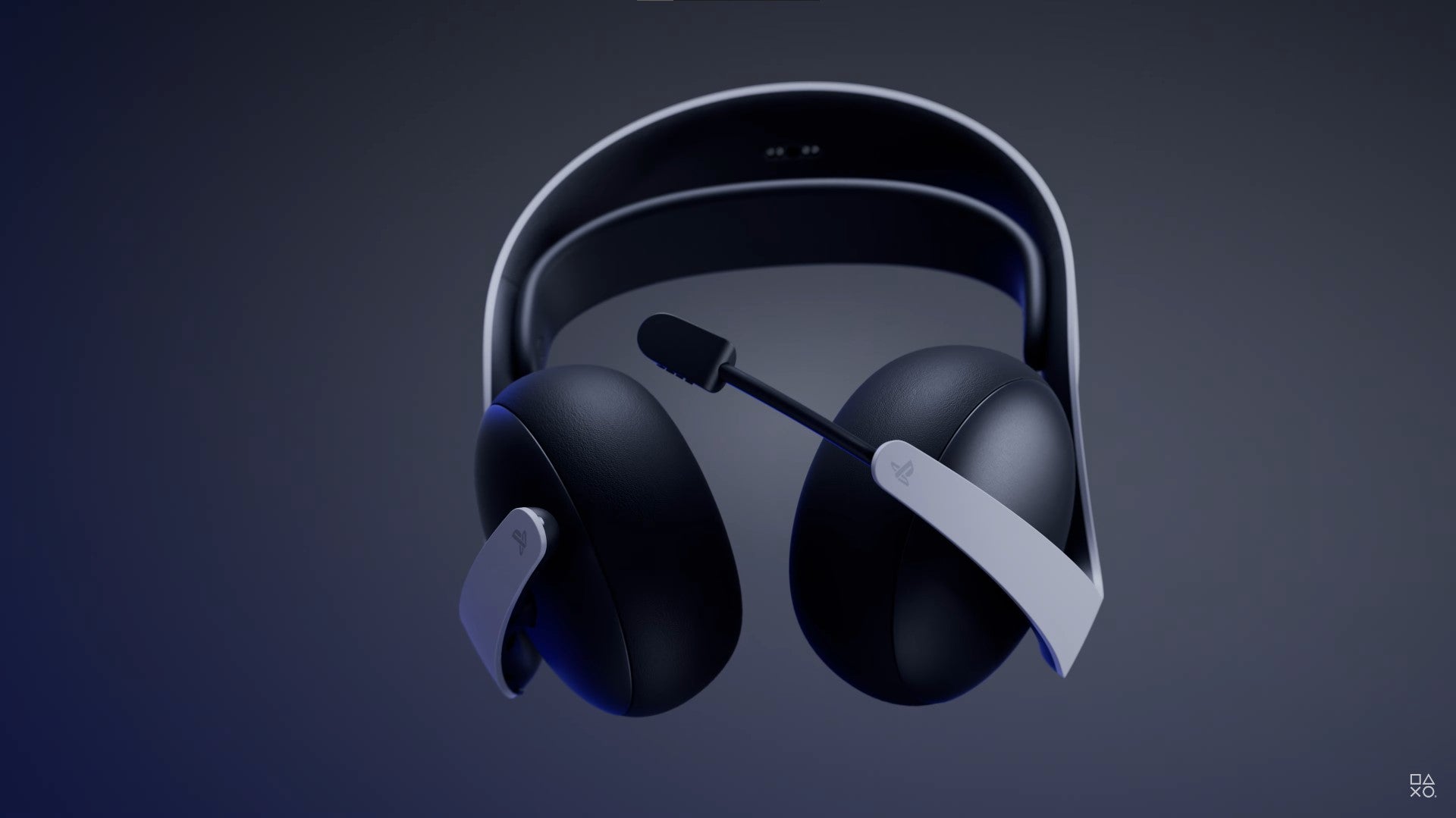
PULSE Elite with its microphone - Source: PlayStation Youtube video PULSE Explore & PULSE Elite Teaser | PS5
- Potentially no USB-C charging port or 3.5 mm port. I didn’t see any ports in the video and the hands-on reports the Elite being charged via contacts on the stand. It's possible Playstation chose not to have any ports. But I truly hope there is one and it’s just hidden somewhere. Without it, it would mean that the Elite’s lifespan is limited to its batteries’ ability to hold a charge.
- Large, deep faux leather earpads. Playstation went with a unique pad large pad design that should fit even the biggest ears.
Oh, and if the Elite is really based off the Maxwell, we might be looking at upwards of 80 hours of battery life. Seriously. It’s pretty crazy.
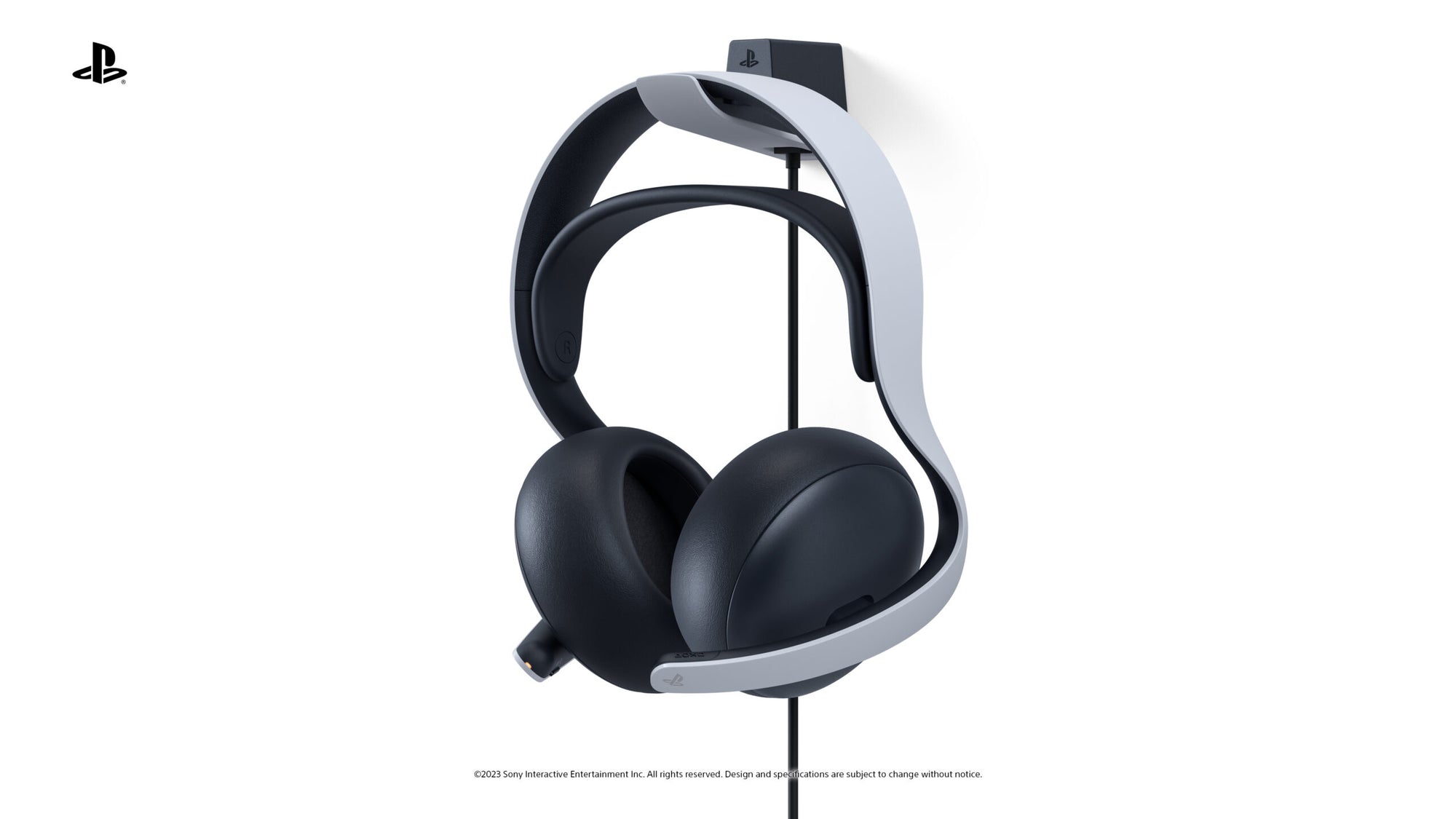
PULSE Elite with its charging stand - Source: PlayStation.Blog
Sound
Alright, so what about sound? In the audio world we can objectively measure the sound of a headphone to help us understand its sound quality. But obviously without having the Pulse Elite on hand for measurements and on ear for subjective impressions, it’s hard to say what it would really sound like. And unfortunately, the descriptions from most outlets and hands-on previews of these accessories tend not to focus on sound but rather its features.
That said, given the wireless nature of the Elite I can guarantee that it will be running some sort of digital signal processing (DSP). If you’ve ever heard of EQ, that’s a form of DSP. Sony’s spatial sound (which I expect to be on the Elite as well) is also a form of DSP. Keep in mind, DSP is not new - almost every modern wireless headphone runs some form of it. It’s practically necessary as the design of feature-rich closed-back headphones tends to be acoustically limited and thus requires some form of compensation. The importance of DSP is simply that the Elite can, in theory, sound like anything you want it to. In practice, you won’t quite get that effect. But the point stands - DSP is used widely in audio to tune headphones and speakers to whichever standard you might desire. It also allows users to select different sound profiles at the touch of a button.
All that to say, if the Elite is based off the Maxwell, I expect it to sound very good. The Maxwell also employs DSP and it’s because of this signal processing that it has a near ideal sound signature (AKA frequency response). Audeze had clearly put in a lot of R&D effort into DSP for the Maxwell and it would be no exaggeration to say that the Maxwell is the best sounding gaming headset at the moment and one of the best closed-back headphones in general. It only makes sense for this effort to be translated over to the Elite. For $150, this is a steal.
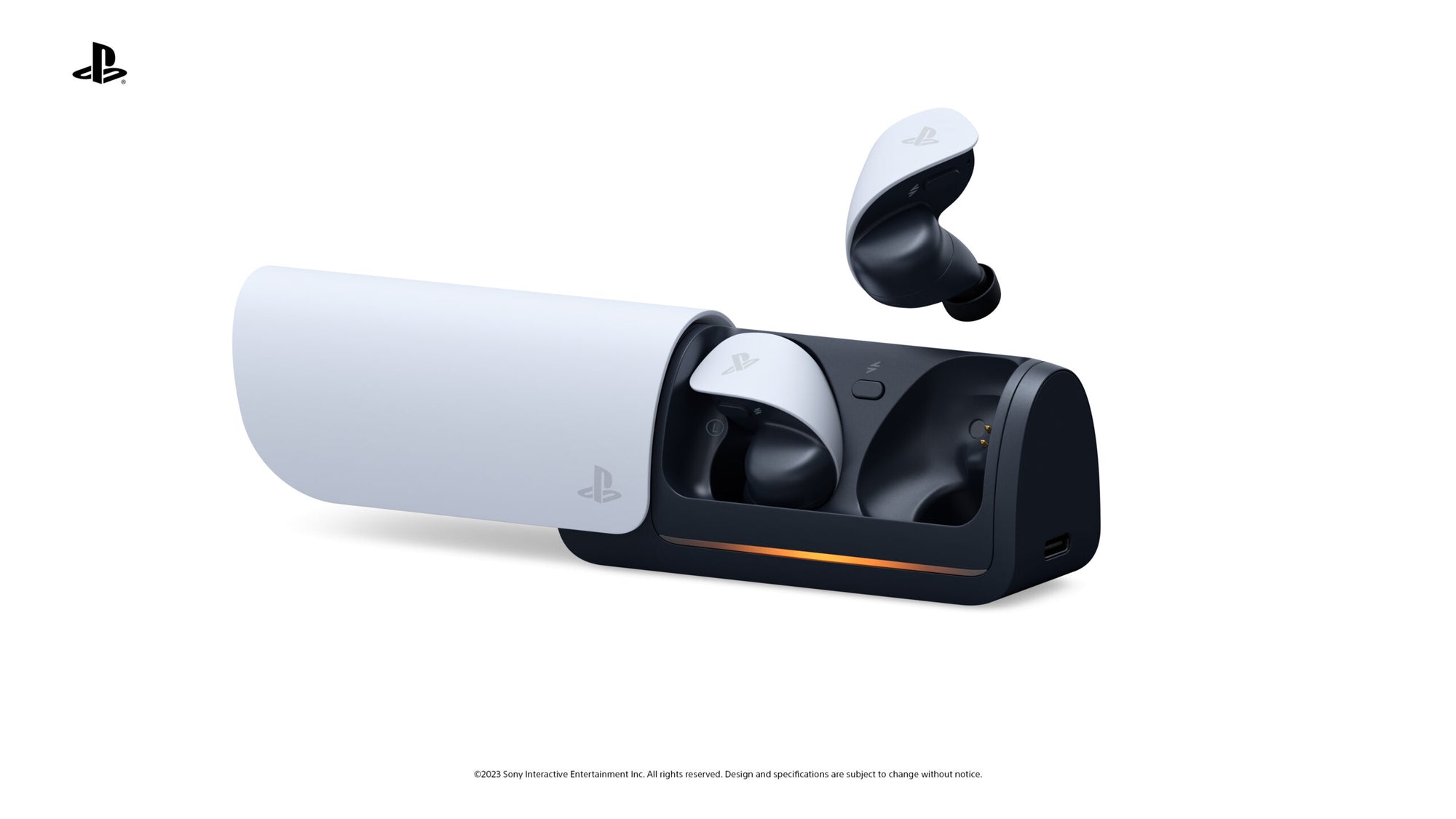
PULSE Explore with its carrying case - Source: PlayStation.Blog
Pulse Explore Wireless Earbuds
With all of that discussion out of the way for the Pulse Elite, the $200 Pulse Explore will likely follow a very design philosophy. I’m surprised it costs more than the Elite to be honest but I suppose that’s the price to pay for miniaturization. Here are the quick facts and features from what we currently know:
- Wireless (offering lossless audio) and is Bluetooth compatible
- Dual microphones with AI-enhanced noise rejection of background noises
- Planar magnetic drivers
- Comes with a charging case
- Comes with a wireless USB adapter for the PS5 to connect to Playstation Link. No adapter is needed for the connecting to the Portal - that is built in. This adapter also allows for connecting to PC and Mac
- Simultaneous Bluetooth and Playstation Link pairing
- Playstation’s 3D audio
- No mention of noise canceling (ANC)
A note on terminology moving forward: wireless earbuds are often referred to as TWS IEMs in the audio hobby. TWS stands for True Wireless Stereo while IEMs stand for in-ear monitor. Despite the in-ear monitor’s reputation as being used by professional stage musicians, it refers moreso to a specific form factor of earphone - one with a tip that goes inside your ear and creates a noise-isolating seal. Practically all high-end earphones are IEMs and there are countless reviews of them on this site.
By this classification, the Apple AirPods Pro is actually a TWS IEM. The Playstation Pulse Explore would also be a TWS IEM. You’ll see this terminology used interchangeably if you do more research on this topic in the future so I wanted to clarify in case there’s any confusion.
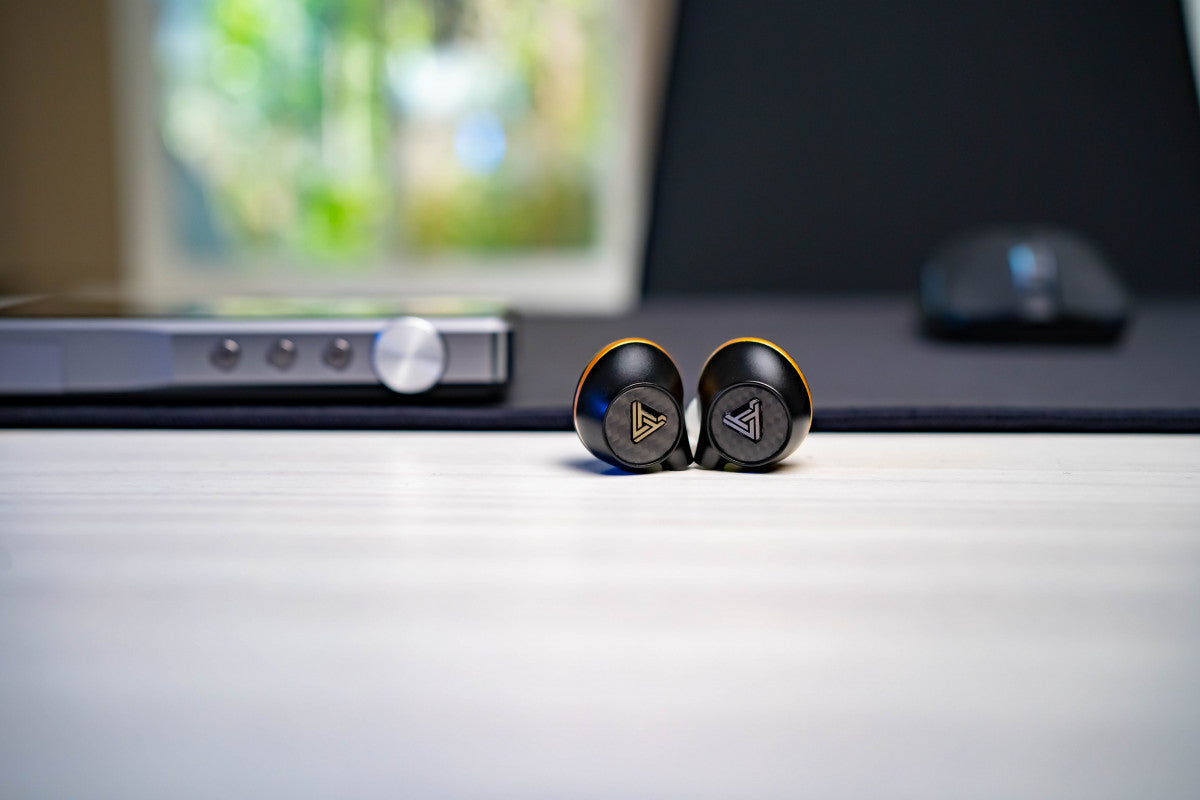
Audeze Euclid
Planar Magnetic… IEMs?
Unlike headphones, planar magnetic IEMs are much less common. In fact, it wasn’t until the last couple of years that planar IEMs have gotten the audiophile stamp of approval. They used to be horribly tuned messes that required a significant amount of EQ to sound somewhat good. But new planar drivers have suddenly become very good, with the 7Hz Timeless being the first example of a planar IEM with great out-of-the-box tuning. Soon after, many products using this planar driver followed.
BUT I doubt the Pulse Explore will use the same planar drivers as the 7Hz Timeless. Audeze also has experience with creating planar IEMs, though it’s not their primary offering. It’s likely that Playstation will be leveraging Audeze’s technology in the Pulse Explore. For those in the audio hobby, this will be a very interesting development as Audeze’s IEMs in the past has been a little hit-and-miss in terms of its reception and there is no other major player for planar IEMs other than small Chinese manufacturers.
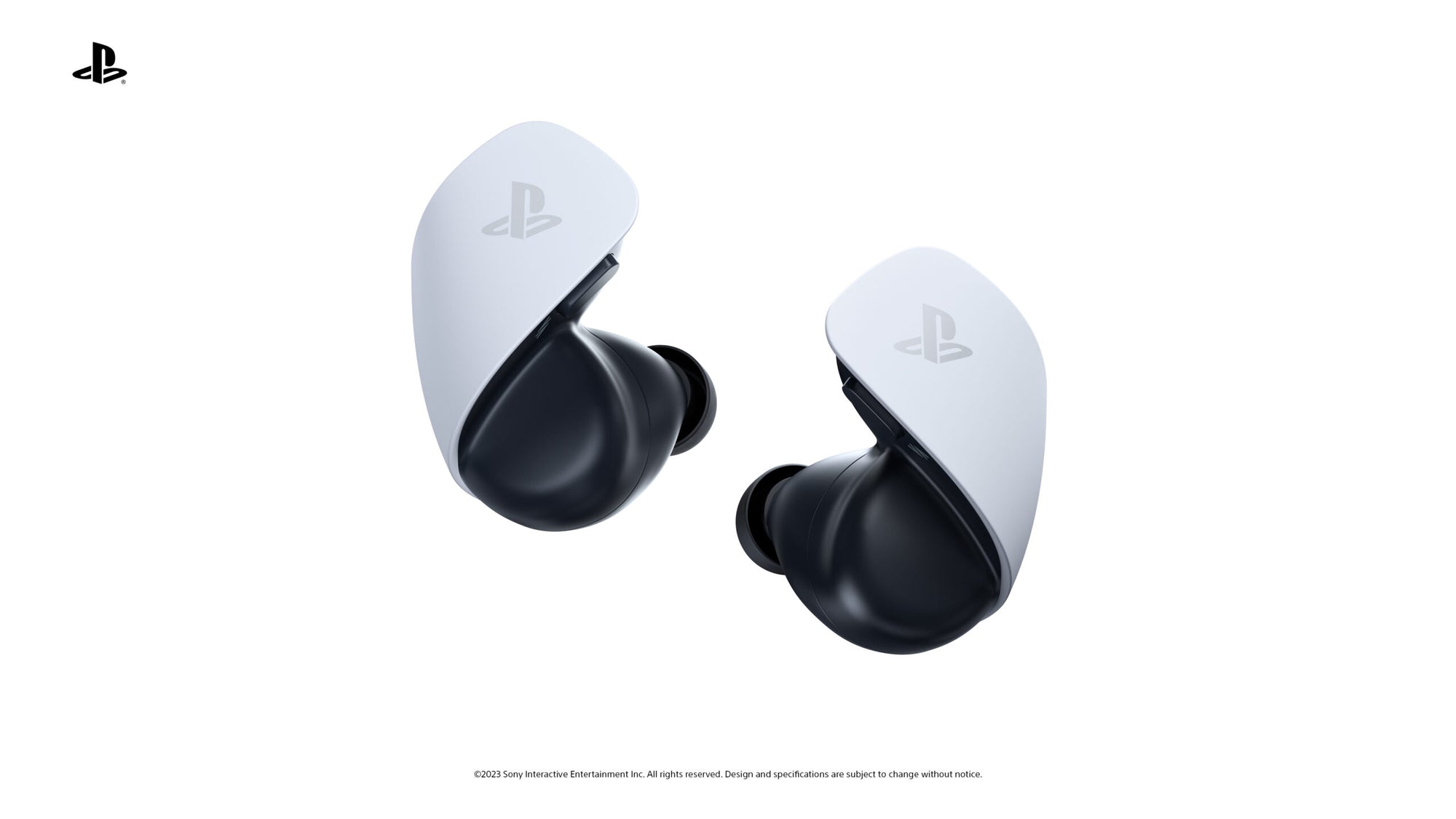
PULSE Explore - Source: PlayStation.Blog
Design and Build
Based on the promo video and this hands-on, the Pulse Explore looks like a fairly standard TWS IEM except with a few physical buttons for connectivity and volume adjustments. It also comes with 4 different ear-tip sizes. Despite the large, twisty looking shell, I don’t think there will be too many issues with comfort as it’s on the outer surface rather than inside facing your ear.
Sound
Like the Pulse Elite, the wireless nature of the Explore is perfect for DSP to be implemented as it requires an SoC in each earbud anyway, particularly as the same AI-noise reducing technology is also in play. What I’m most interested in is how this DSP will handle the sound profile of the Explore. Some of Audeze’s early planar IEMs had a very unique open-back design to them and Audeze had special DSP cables to fix the significant issues with their tuning. The more recent Audeze Euclid is a true closed-back wired planar IEM but still suffered from a not-so-great tonal profile.
But with DSP, I’m confident that the Explore has the potential to also sound very good. Audeze’s previous DSP in their IEMs worked magic for their sound and it would be no different here. I predict that the sound profiles options of the Explore and Elite will be nearly identical. That said, IEMs and headphones are different beasts so there is a possibility that the R&D work Audeze did with the Maxwell won’t fully translate to the Explore.
TWS IEMs for gaming makes a lot of sense, especially when we look towards a future of VR headsets strapped to our faces. Their small lightweight nature makes it ideal for plenty of movement and they don’t get hot in long sessions like headphones do. It’ll also pair perfectly with the principles of portability of the Playstation Portal. The price is a little surprising, being $50 more than the headset, but not wholly unrealistic given the cost of other higher-end TWS IEMs on the market like the $300 Sony WF-1000XM5. As a standalone product, it’s a pretty good proposition given its variety of features. But as a part of the Playstation ecosystem, its integration with the Playstation Portal will be a very compelling draw.

PlayStation PULSE Elite and PULSE Explore - Source: PlayStation Youtube video PULSE Explore & PULSE Elite Teaser | PS5
Conclusion
I hope that was an informative read that provided context for these upcoming products. Of course, everything I’ve written here is entirely speculation on my part. I’m fully prepared to be completely wrong if both the Pulse Elite and Explore don’t share any DNA with the Audeze Maxwell. After all, Sony has a history of completely developing their high-end audio products entirely in-house. And boy would I look silly if that was the case. But hey, audio is an interesting hobby and if any of this article shed a bit more light into the infuriatingly vague marketing terms that often get thrown about with these sort of product releases, I’d say it was a worthy discussion. I especially look forward to seeing what Audeze will do in the future under the Sony umbrella.
- Fc-Construct
Further Resources
I’ll leave some introductory articles here if you’re interested to learn more about headphones and IEMs in general.
The Headphone Show’s Review of the Audeze Maxwell - An in-depth video review by fellow reviewer Resolve covering everything about the Maxwell. Will be a great place to start for more context on what I’ve discussed here.
Resolve’s 2023 Headphone Wall of Fame - A great introduction to headphone audio with some recommendations of products to watch for.
The Best In-Ear Monitors (IEMs) in Summer 2023 - A general introduction to IEMs for the audiophile hobby with recommendations at price ranges from $20 - $5,000.
Gaming Audio: Separating the Truth, the Myths, and the Marketing - I wrote this guide to help people understand what exactly “gaming audio” entails and provide a few recommendations for your gaming audio set-up. It also explains some of the basics of tonal balance as well.
Best Headphones and Audio for Streamers: A Beginner's Guide - I wrote this guide to help clarify all the confusing terminology surrounding audio gear for people looking to get started with streaming.
For more information, check our reviews here at The Audio Files, over at The Headphone Show on YouTube, and join our Discord server where we have a great community of enthusiasts happy to talk about all things audio, especially if you want to make that jump into the deeper audiophile world.
